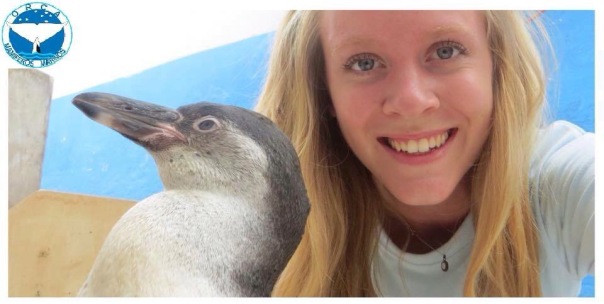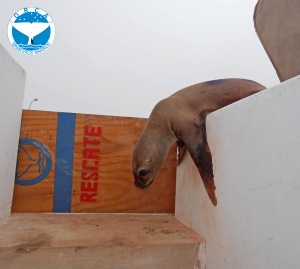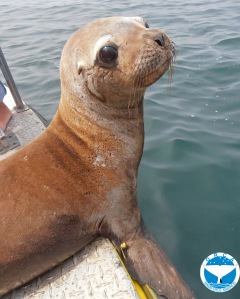When you have a baby, you know what to expect after gathering information from media, the community, and even your own parents; a lot of eating, poopy diapers, crying, and an intense heartwarming joy. Well, when I began volunteering for the Organization for Research and Conservation for Aquatic Animals (ORCA), I had no idea that I would be dealing with these same issues and feelings, times six. No, I did not go to ORCA to take care of babies, and no I did not have six babies when I arrived to ORCA. In actuality, I was partially responsible for the care of six young sea lions – who surprisingly, simply ate, pooped, cried, and filled me with an intense heartwarming joy.
When I arrived at ORCA on September 7th, 2017, there were already six young sea lions at the facility in rehabilitation. These marine mammals had been rescued by ORCA within the last few months because they were found abandoned and without their mothers. I hate to group them together as simply a rescue group, because each individual sea lion had their own personality and I was lucky enough to get to know each of them – but that’s a whole different story. Today we’re going to talk about the end of my journey with these beautiful creatures, their release back into the Pacific Ocean.

On September 17th, 2017, six young sea lions were about to take the trip of a lifetime, in fact Josey, Joan, Star, Veronica, Ahab and Nepal, were taking a trip to a whole new life. I remember leaping out of bed before my alarm went off and racing to get dressed so I could help feed them, prepare kennels and weigh each of the sea lions. After the early morning work was done we paired them up and shuffled them into large dog kennels to load into the back of the cars. We crammed 5 of us in a pickup truck and another call full of volunteers followed us. The plan was to arrive at Wakama beach in the early afternoon for the sea lion release. But the plan quickly changed as the brakes broke on the truck and we pulled over to wait for help. Ten minutes passed, then thirty, then forty-five and I was restless. The heat was beating down on my shoulders and I could only imagine how uncomfortable the sea lions had to be in their crates. We unloaded them from the truck and I stood on the side of the road watching the kennels, while everyone else attempted to make phone calls with their spotty reception – I’m sure it was an interesting sight for those driving by. After an hour of waiting, the driver got ahold of a tow truck and a friend who was willing to make the trip up to Wakama beach with us. After the time had passed, a car full of volunteers decided to turn back, but the rest of us continued. As we continued on our journey, the car troubles were simply another bump in the road (and believe me, Peru has a lot of bumps in the road!).
As we pulled up on the beach of Wakama, we unloaded the sea lions from the back of the car and lined up the kennels on a little hill a few feet from the water’s edge. I could feel my heart pound inside my chest. We had the rescue boards lined up to direct them to the ocean. I was expecting them to stay in the kennels not knowing what to do, but in a short countdown, I was amazed. Three, two, one. We opened the kennels. To my surprise, with a little guidance, all of the sea lions scurried into the ocean and swam out together.
These outstanding marine mammals once again get to call the ocean home, and have another chance at survival, all thanks to ORCA’s organization and efforts, which for two months, I was proudly apart of.
As I watched Josey, Joan, Victoria, Star, Ahab and Nepal swim out deeper into the ocean I felt like I was letting my babies go. When your child is going off to college, you know what to expect; intense pride, intense joy and a little bit of aching in your heart. When I began volunteering at ORCA I had no idea that I would be dealing with these same issues and feelings, times six at their release.
Written by Amanda Pass, ORCA International Volunteer from Minnesota, United States. September-October, 2017.














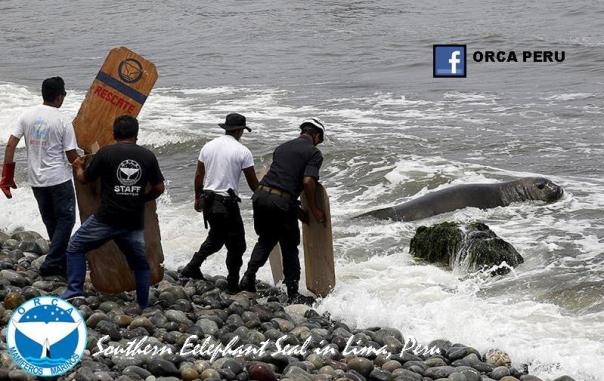







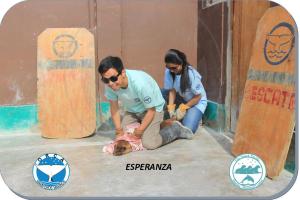

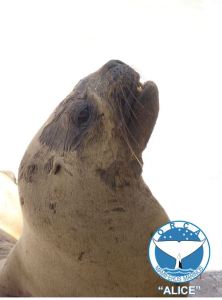
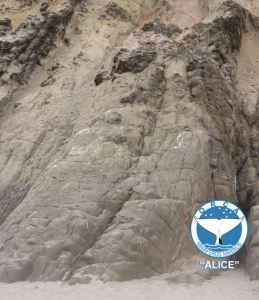 This is where “Alice” was rescued. She was rescued on the 24 of January of 2015.
This is where “Alice” was rescued. She was rescued on the 24 of January of 2015. When “Alice” first arrived she was unable to close her mouth because of the pain.
When “Alice” first arrived she was unable to close her mouth because of the pain. Thank you for reading about “Alice”, her life is only just beginning, she is young and extremely strong willed, she wants to live …so let her, by donating to ORCA. In another 2 years time she will be becoming a new mother bringing new life in to this world, give her that opportunity and help us to help her.
Thank you for reading about “Alice”, her life is only just beginning, she is young and extremely strong willed, she wants to live …so let her, by donating to ORCA. In another 2 years time she will be becoming a new mother bringing new life in to this world, give her that opportunity and help us to help her.

